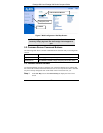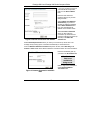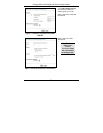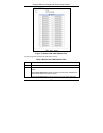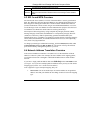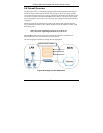
Prestige 660H and Prestige HW Series Compact Guide
25
The following table describes the fields in this screen.
Table 3 Wireless LAN: Wireless
LABEL DESCRIPTION
Enable
Wireless LAN
The wireless LAN is turned off by default, before you enable the
wireless LAN you should configure some security by setting MAC
filters and/or 802.1x security; otherwise your wireless LAN will be
vulnerable upon enabling it. Select the check box to enable the
wireless LAN.
ESSID (Extended Service Set IDentity) The ESSID is a unique name to
identify the Prestige in the wireless LAN. Wireless clients associating
to an Access Point (the Prestige) must have the same ESSID. Enter
a descriptive name (up to 32 printable 7-bit ASCII characters).
Hide ESSID Select Yes to hide the ESSID so a wireless client cannot obtain the
ESSID through passive scanning.
Select No to make the ESSID visible so a wireless client can obtain
the ESSID through passive scanning.
Channel ID The radio frequency used by IEEE 802.11b wireless devices is called
a channel. Select a channel from the drop-down list box.
RTS/CTS
Threshold
Select this option to enable the RTS (Request To Send)/CTS (Clear
To Send) threshold to minimize collisions. Enter a value between 0
and 2432. The default is 2432.
Request To Send is the threshold (number of bytes) for enabling the
RTS/CTS handshake. Data with its frame size larger than this value
will perform the RTS/CTS handshake. Setting this attribute to be
larger than the maximum MSDU (MAC Service Data Unit) size turns
off the RTS/CTS handshake.
Fragmentation
Threshold
Fragmentation Threshold is the maximum data fragment size that
can be sent.
WEP
Encryption
WEP (Wired Equivalent Privacy) encrypts data frames before
transmitting them over the wireless network.
Select Disable allows all wireless computers to communicate with
the access points without any data encryption.
Select 64-bit WEP, 128-bit WEP or 256-bit WEP and then configure
the keys in the fields provided to activate data encryption.



